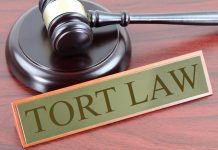Introduction –
What is the company? An organization implies an organization framed and enlisted under Companies Act, 2013 of section 2 (20). The organization is a different lawful substance. It comprises of its individuals/investors. The Property, Liabilities, Duties, Powers, Assests, privileges of organization and individuals are different from one another.
The organization as a legal entity was solidly settled in the milestone choice in Salomon v. Salomon and Co. Ltd.
In this Judgment we saw as Lord Macnagten noticed: “The organization is at law an alternate individual out and out from the supporters of the reminder, and. However, it very well might be that after the fuse the business is exactly equivalent to it was previously, and similar people are chiefs, and similar hands get the benefits. Get the benefits, the organization isn’t in law the specialist of the endorsers or trustee for them.” Likewise.
The teaching has been displayed in Lee v. Lee’s Air Farming. The Privy Council held that Lee, as a different and unmistakable element from the organization which he controlled, could be a representative of that organization so that Lee’s significant other could guarantee laborers’ remuneration following her better half’s demise.
Under the corporate veil. –
A legitimate idea that isolates the character of an enterprise from the characters of its investors and shields them from being actually at risk for the organization’s obligations and different commitments is the corporate cover or corporate safeguard.
Piercing the corporate veil –
It is the lawful language used to portray an activity sought after against an organization that eventually prompts individual obligation of the proprietors, investors, or individuals wherein the corporate construction is dismissed. This individual responsibility opens proprietors, investors, or individuals ledgers, genuine and individual property interests, and ventures to chance. Consider it thusly – the corporate design is the “cover” that gives security, and if that cloak is punctured, there is no more assurance, the issue of “lifting the corporate shroud” has been considered by courts and reporters for a long time.
Elements of piercing the claim –
When all is said and done, there are three segments that the complainant should demonstrate to puncture the corporate cloak. Those components are regularly described as
(1) Control and mastery,
(2) Improper reason or use, and
(3) Resulting harm or mischief.
Ground on which the veil can be lifted up –
The Corporate veil is lifted when to see the a particular act is done by whom and what it means, so the punishment would be given accordingly.
- Fraud / Improper Conduct
The courts have been more than pre-arranged to puncture the corporate cover when it feels that misrepresentation is or could be executed behind the veil
In Jones v. Lipman – The court said that, to protect oneself from specific performance of the act, Lipman used his company as a mask which is not a legitimate use of corporate personality so this is a fraudulent act.
- When Company is a Cloak or a Sham
In, Gilford motor company v Horne – Horne was employee made a contract with Gilford motor company that he should not solicit =with any customer regarding the same work. But Horne made his own company which some how work same as the Gilford motor company. So later court applied the Injuction and declared the act done was invalid.
- Evasion of Tax – Avoiding Welfare Legislation
If a Principal Company makes new companies with a sole purpose is to distribute its assests to those companies to save themselves from the Tax Liability.
Workman of Ass Rubber Industry Ltd v Associated Rubber Industry ltd
- Determination of enemy character –
If India is into war with a country then that country’s citizens would be alien emeny and they have different laws to applied
In, Daimler Co Ltd v Continental Tyre and Rubber Co ltd
In Continental Tyre and Rubber Co Ltd’s shares were held by only one England share holder while remaining German residents and all directors were German residents. Continental Tyre and Rubber Co Ltd supplied tyres to Daimler,which was england but Daimler was concerned that making payment might contravene a common law offence of trading with the e nemy as well as a proclamation issued under s 3 (1) Trading with the Enemy Act 1914. Daimler brought the action to determine if payment could be made, given that it was the First World War.
Also,
In Life Insurance Corporation of India v. Escorts Ltd.,
Justice O. Chinappa Reddy had Emphasized that the corporate shroud ought to be lifted where the related organizations are inseparably associated as to be in all actuality, part of one concern. He, in any case, didn’t think that its essential or attractive to count the classes of situations where lifting the cover is reasonable, “since that must fundamentally rely upon the important legal or different arrangements, the article looked to be accomplished, the censured lead, the association of the component of public interest and the impact on the gatherings who might be influenced.” all things considered, taking into account certain plans presented by the Union of India, 13 NRI organizations bought shares. The contention was that every one of the 13 organizations were a veneer and Mr. Swaraj Paul was the genuine financial backer. The Supreme Court wouldn’t examine into this inquiry by seeing that when the governing body required lifting of the corporate Corporate veil for a specific reason, the Court would lift the cover just to that degree and no more.
Article By : – Snehal Dhore
References –
- https://www.lawctopus.com/academike/corporate-veil/
- http://dspace.jgu.edu.in:8080/jspui/bitstream/10739/45/1/Harshit%20Saxena%20-%20Lifting%20the%20Corporate%20Veil.pdf
- https://blog.ipleaders.in/the-concept-of-corporate-veil-and-reverse-piercing-of-the-corporate-veil/
- https://www.researchgate.net/publication/328469896_Piercing_the_Corporate_Veil_Historical_Theoretical_and_Comparative_Perspectives
- https://www.lawyersclubindia.com/articles/case-laws-pertaining-to-lifting-up-of-corporate-veil-theory-11776.asp
- Salomon v. Salomon & Co. Ltd. [1897] A.C. 22.
- Lee v. Lee’s Air Farming [1961] A.C. 12
- Gilford Motor Co Ltd v Horne [1933] Ch. 935 (CA)
- Jones v. Lipman [1962] l WLR 832
- D.H.N. Food products Ltd. v. Tower Hamlets London Borough Council [1976] 1 WLR 852; HackrbridgeHewittic and Easun Ltd. v. GEC Distribution Transformers Ltd, (1992) 74 Comp Cas 543 (Mad); Fatima Tile Works v. Sudarsan Trading Co. Ltd, (1992) 74 Comp Cas 423 (Mad)
- Daimler Co Ltd v. Continental Tyre & Rubber Co (Great Britain) Ltd [1916] 2 A.C. 307 (HL)
- Life Insurance Corporation of India v. Escorts Ltd








